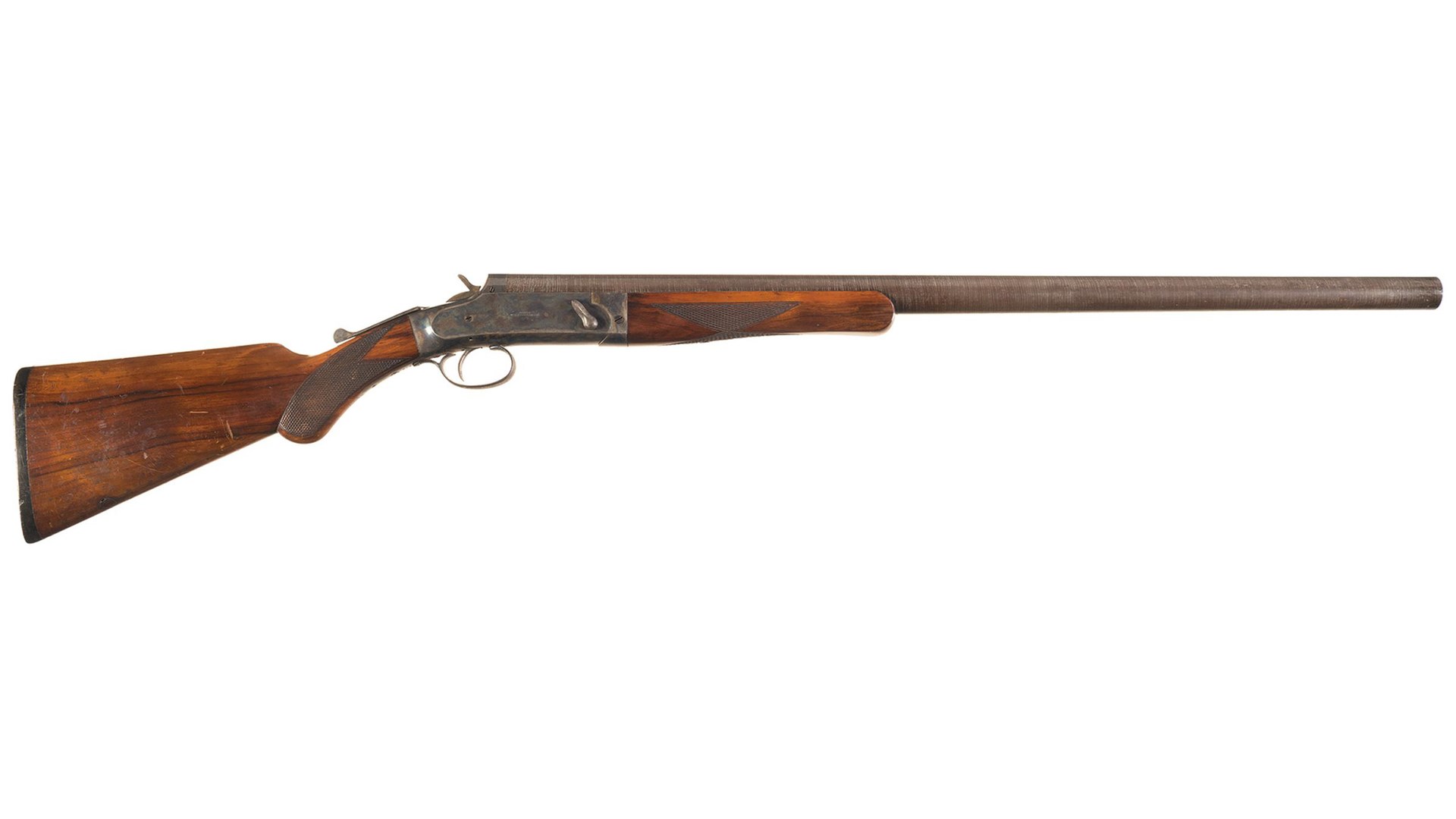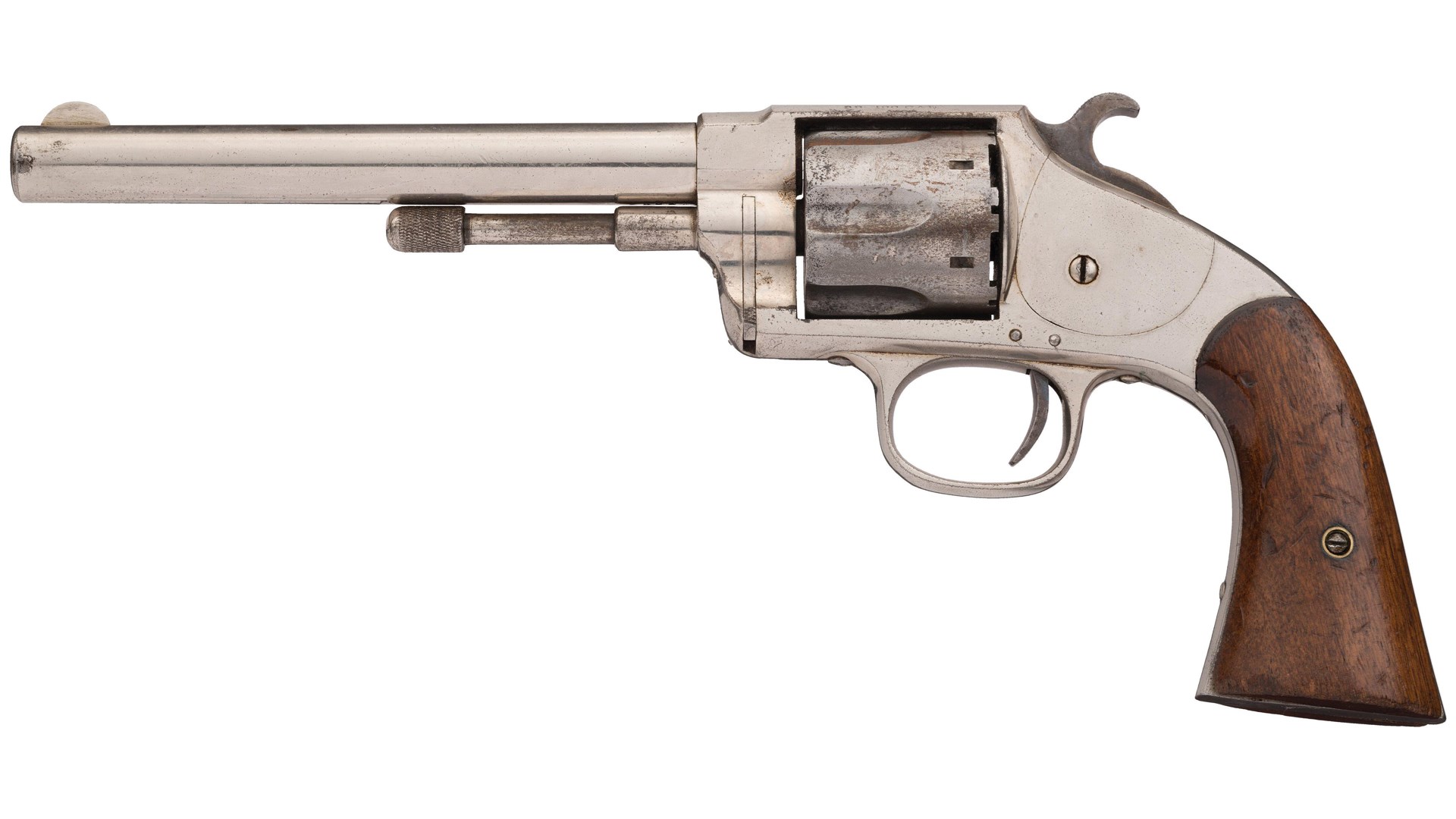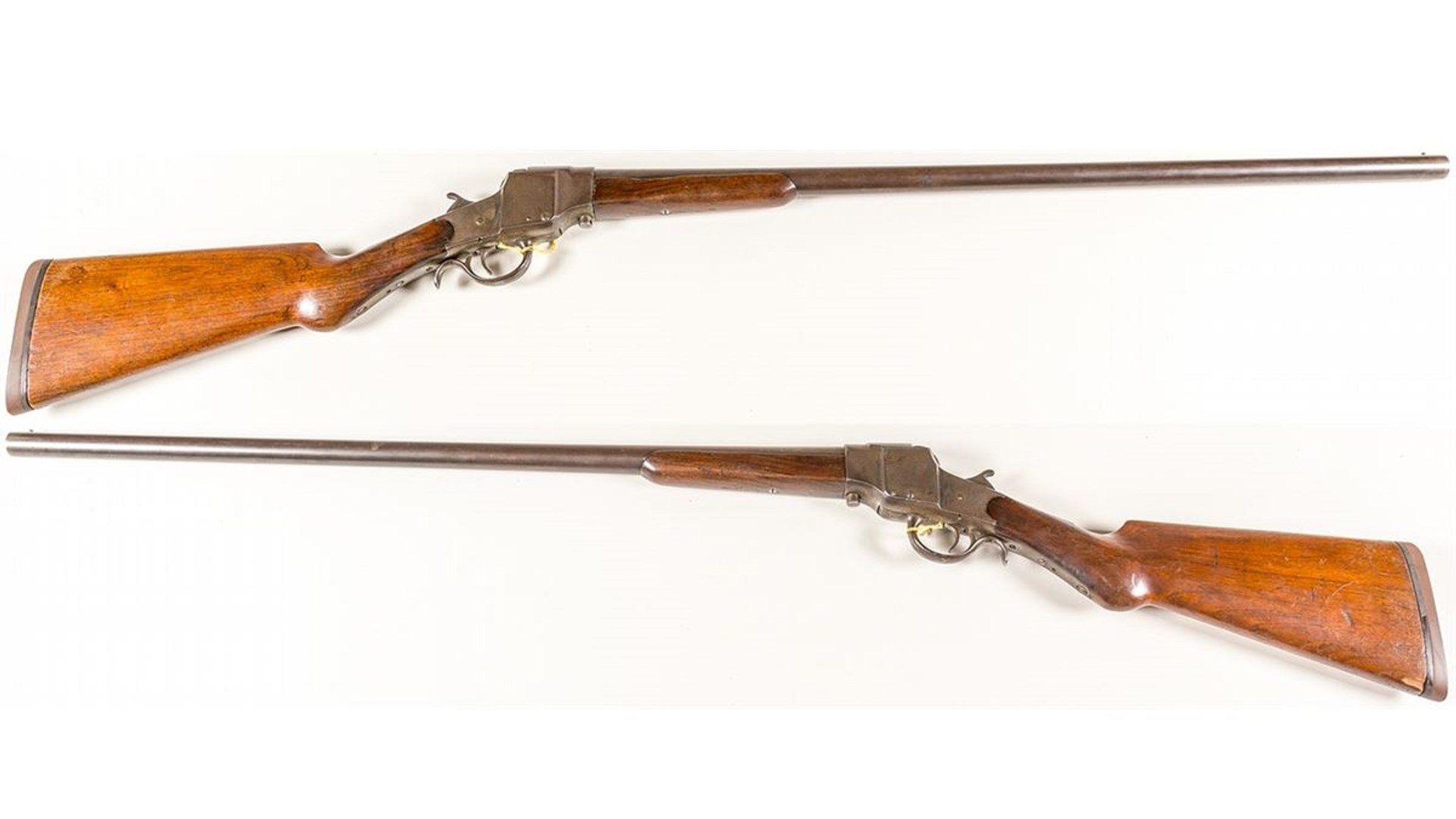When it comes to the major firearm companies prolific in the 19th century, many of them still survive today and are highly recognizable. Companies like Colt, Smith & Wesson, Winchester, Marlin and more continue to survive and thrive more than 150 years after their founding. But in the late 19th and early 20th century, there was another giant in the firearm world, and little remains of their impact today: Hopkins & Allen.
Brothers Charles W. and Samuel S. Hopkins of Norwich, Conn., were talented gunsmiths. The pair, along with Charles H. Allen, Charles A. Converse and Horace Briggs, pooled $1,000 each, and in 1867, launched an armsmaking firm. In May of the following year, Hopkins & Allen Manufacturing (H&A) was incorporated. In need of larger quarters, the factory moved from its original shop at the old Bacon Manufacturing Company building to the corner of Willow and Franklin St., in Norwich.
Six years into the partnership, the Hulbert brothers, William and Milan, purchased Charles A. Converse’s interests in the arms company. With this partial change in ownership, the arms company was now the sole producer of Merwin Hulbert revolvers. In 1896, the Hulbert brothers went belly-up, an event that probably had a hand in the Hopkins & Allen bankruptcy two years later. It was reorganized in 1898 as Hopkins & Allen Arms Company. With this change in the company’s name, H&A opened its doors to customers, allowing them to purchase guns straight from H&A’s manufactory. The company also reached into Europe and South America. Hovering over the gun manufacturer were dark clouds that burst forth on Feb. 4, 1900.
That morning, H&A’s four-story brick factory caught fire. It was the night watchman, Joe Skelly, who discovered the blaze. In those days, the fire department was slow in arriving, and so it was with the Hopkins & Allen building—they arrived too late to save anything. This fire levied an unexpected privation on the employees, for the fire not only consumed the building, but all the gunsmiths’ tools as well. Without those tools, the entire work force was unemployed. Surprisingly, just a year later, H&A moved into a brand-new 80,000 sq.-ft. Hopkins & Allen factory, which was constructed on the original footprint, and rededicated in March 1901. The new factory was 220′ in length and 60′ wide. The new building, with a total cost of $55,000, stood four stories high, just as the original building. Ramping up operations produced 40,000 firearms a year.
In 1902, the company acquired Forehand Arms Company, for whom it had been making revolvers under contract. Several other firms, especially in the east and the Midwest, served as H&A distributors; Western Gun Works, Chicago, Ill.; Toledo Fire Arms Co., Toledo, Ohio; J. A. Ross & Co., Boston, Mass., Sears, Roebuck & Co., Chicago, Ill., and The Pickering Hardware Co., of Cincinnati, Ohio, were just a few. By 1904, the company was realizing amazing manufacturing growth; fabricating 188 distinct models of revolvers, rifles and shotguns, and distributing its products around the world.
As far as quality goes, the XLs stood out as H&A’s superior firearms. As a yardstick measuring the quality of their guns, generally, the larger-caliber guns appear to be worth more than smaller .22-cal. models. Most pistols and revolvers were nickel-plated, with bluing done at an additional charge, making the latter variety rarer. The quality of engraving varied, with the more expensive guns being delicately done with elegant curves, showing the hand of a skillful artisan. At the other end of the scale, less-expensive guns were scantly incised, leaving an orange-peel appearance that mimics the effect of engraving.
Production ran smoothly for a number of years, but on the eve of the First World War, trouble struck. For a company that had endured fires and financial downturns, it appears the difficulty of fulfilling substantial military contracts was too much. The company’s last commercial catalog was published in 1914. In 1915, Hopkins & Allen initiated retooling to take on a large project supplying 400,000 SMLEs for the British military. But Great Britain offered no money to start the project, so H&A was already on the hook for costs related for retooling; add to this, the British government demanded a deadline that was impossible to meet, resulting in a lawsuit. In August that same year, the company contracted with the Belgian army to produce 140,000 Mauser Model 1889 rifles and 10,000 carbines. But H&A seriously underbid the project and were late in delivering the guns. The price realized was $28 per rifle—far too low to make a profit
This proved to be the death knell for H&A, as the company declared bankruptcy the following year, and 1916 is the last year the company appears in the commercial directory. This left the door open for the Belgian government to acquire H&A‘s assets for $65,000. In 1917, the Belgians turned the company over to Marlin-Rockwell Arms Co. This included H&A’s equipment, inventory and schematics, and the government instructed Marlin-Rockwell to complete the contract that called for the delivery of 150,000 Mausers. H&A had only delivered 11,392. Marlin-Rockwell managed to deliver 131,000 rifles at the price of $42.50, a more realistic price in September 1918. Later, the “Hopkins & Allen” name was secured by Numrich Arms, which produced blackpowder models using the name for a number of years. Today, the company offers many original and replacement components for Hopkins & Allen guns and is now known as Numrich Gun Parts Corporation, a leading supplier of gun parts and accessories.

Like the span from rudimentary horse and buggy to the more modern gasoline-powered vehicles for transportation, in the world of firearms, Hopkins & Allen company made the transition from muzzleloaders to the smokeless powder firearms of the World War I. The company was in business from 1857 to 1916, a period of almost 60 years. Hopkins & Allen produced guns under different names. Aside from Merwin Hulbert revolvers, H&A turned out a variety of spur trigger single-action revolvers in .22, .32, and .38 calibers. Distributors attached names to these guns, many of which are still recognizable today, such as American Eagle, Blue Jacket, Captain Jack, Chichester, Dictator, Imperial Arms Co., Monarch, Mountain Eagle, Tower’s Police Safety, Universal and XL.

In addition to these models, several companies relied on Hopkins & Allen’s gunmaking expertise to make their designs. Among them was the S.H. Roper Company’s repeating shotgun, with a parent date of April 10, 1866. This firearm carries the Hopkins & Allen stamp, indicating that the company had done the manufacturing. Additionally, the Czar revolver sold by C.W. Turner & Ross of Boston, Mass., was produced by Hopkins & Allen. The gun grips usually with the usual dog’s head sported the T & R engraving instead. A revolving rifle called the Chichester, sold by the Chichester Rifle Co., is one of Hopkins & Allen’s, and a few years afterward, an analogous rifle showed up from the J.A. Ross & Co., this time called The Challenge.

During the company’s manufacturing tenure, several distinct models were produced. The first gun, a muzzleloading .31-caliber pistol, included either a 4″ or 5″ barrel. This gun was made in the first year of operation, 1868 or later. At that early date, cap-and-ball guns were still in favor. This pistol closely matches one turned out by Bacon and Manhattan. This demonstrates a close collaboration between the two firearm manufacturers. This cooperation was confirmed even prior to Hopkins & Allen being formed. Bacon made use of three patents belonging to Hopkins and associates, patents that were awarded before Hopkins and Allen was ever established. It’s important to note that Hopkins & Allen Manufacturing Co. never made use of these patents.
There were numerous patents, some more important than others, associated with Hopkins & Allen firearms, although the majority were attributed to members of the Hopkins family, a number were granted to associates and employees. The 1871 patent attributed to Samuel S. Hopkins addresses the cylinder-pin catch that is positioned on the side of the frame. This feature is found in every Hopkins & Allen spur trigger produced from 1871 to 1900. All three of the patents issued in 1875, covered safety concerns: the safety cylinder, the cylinder pin as safety catch, and the cylinder-pin hammer latch. These features were used in part on many models. The patent issued in 1885 identifies a hinged hammer that prevents the hammer catching as the gun is removed from one’s pocket. Once fired, the hinge returns automatically to the safe position.

At its high point of production, Hopkins & Allen was the third largest American firearms producer, trailing only Colt and Winchester. Hopkins & Allen’s variety of firearms demonstrates that the company produced a wide range of quality, from expensive, embellished guns to affordable, utilitarian arms. In 1874s a pair of matched set of XL-4 pearl-handled, nickel-plated pistols, commanded a price of $60. Aside from producing firearms XL-4 for the high-end market, on the other end of the price spectrum H&A also produced a .22- and a .32-cal. double-action, self-cocking, solid frame revolver with a 2″ barrel that was advertised for sale in 1907 for the low price of $2.75. Truly, few firearm makers in that period displayed the same breadth of capability.
Read the full article here

